Ancient Egyptians had shaped the food culture in the Ancient world. They were the largest suppliers of grains, especially wheat, and fed a population of about a million across different oldest civilizations including the Roman Empire.
Thus, their food culture was rich. They could eat much nutritious and diverse food compared to other contemporary civilizations such as the Roman civilization and Indian civilization.
The traces of the food and drink culture of Ancient Egypt are seen in various tomb walls in the form of paintings. They kept food materials like bread and beer in tombs with the belief of helping dead people in their afterlife.
The practice has enabled us to deduct the food culture because archaeologists can trace Egyptian paintings of hunting, farming, fishing, and the pattern of food consumption of Ancient Egyptians in today’s world.
Here is the list of the top 10 food consumed by Ancient Egyptians, along with their description.
Why did Ancient Egyptians build tomb walls with food items?
Content
Ancient Egyptians built tomb walls with food items as they believed they would serve as food for the dead people in their afterlife.
How was an abundance of fruits and vegetables grown in Ancient Egypt?
Ancient Egypt had very fertile land suitable for vegetation because of the annual flood of the Nile river. As a result, fruits and vegetables received plenty of water to grow to feed the entire population of Ancient Egypt.
Why was beer the most common drink in Ancient Egypt?
Beer was the most common drink in Ancient Egypt because there were very few water canals, and freshwater was only available in the Nile River, whose water made many people sick.
Why did Ancient Egyptians discover a wide variety of oils and seasonings?
Ancient Egyptians discovered various oils and seasonings to cook their meat more appropriately and enhance the flavors for higher meat consumption. They found 21 different oils and started adding cumin, mustard, thyme to their food to meet their nutritional diet requirements.
Why was bread a staple food for Ancient Egyptians?
Grains were planted twice a year due to the presence of plenty of water from the Nile River and fertile lands. The grains produced were used to make flour for bread. Thus, bread became a staple food for Ancient Egyptians.
10. Poultry Products
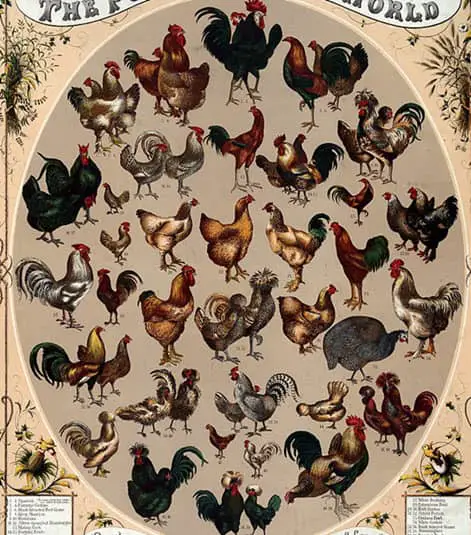
Source: Wikimedia Common
Ancient Egyptians consumed poultry products as a regular part of their diet to ensure a healthy diet. Both rich and poor people ate them as a part of their daily diets.
Egyptians consumed duck, goose, swan, quail, crane, pigeons, doves, and ostrich. Pigeons, geese, ducks, and doves were famous amongst the upper-class people. At the same time, the lower class people were only allowed to consume swan and wild ostrich by hunting them.
They raised Ducks, swans, and geese in people’s houses to obtain their eggs. Duck eggs were most loved and included in the regular diet of all classes of people.
Egyptians ate eggs and bird meat to maintain a protein intake, passed onto them by their ancestors. They preserved eggs and meat with food additives for an extended period for daily consumption.
Poultry products were a staple in the food and a traditionally passed culture. Buying and keeping poultry products stocked up in the kitchen pantry was a way of Egyptian life as it was considered a sign of good health and prosperity.
9. Dairy Products
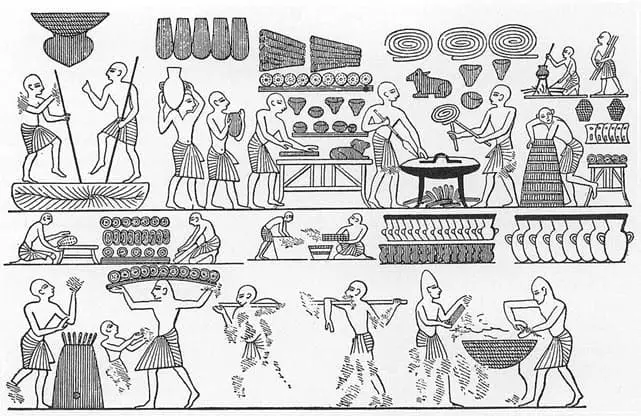
Source: Wikimedia Common
Agriculture and animal husbandry were the major economic activities in Ancient Egypt. People raised bulls to plow their fields for irrigational purposes. Moreover, they reared cattle such as goats, cows, and sheep to obtain their milk and make different dairy products.
Rearing Cattle was done by many people because Ancient Egyptians believed the larger herd size to represent wealth. They used cattle milk in temples for worshiping as milk was the most prestigious symbol.
Milk was also used to make dairy products such as curd, whey, cream and was consumed widely by Egyptians as delicacies. However, certain people could not consume certain dairy products, sometimes even milk, based on the religious beliefs of their particular temples that only gods, priests, and aristocrats could have.
At the same time, milk and dairy products were an essential part of the diet for high-class people. The presence of milk and dairy products in the diet was considered a symbol of prestige and being well off. Thus, it was considered an exclusive part of morning diets only.
8. A variety of vegetables, including cereals

Source: Wikimedia Common
Ancient Egyptians consumed very balanced and healthy diets. They ate Vegetables as an integral part of their regular food. Ancient Egypt had fertile land and a suitable environment for cultivation as it was close to the Nile river and had plenty of water.
There was a prominent settlement of farmers near the banks of the Nile river. They planted vegetables and cereals like wheat and barley for their livelihood. Barley and wheat were usually cultivated twice a year with the help of an abundance of Nile river’s water as it would flood every year.
In Ancient Egypt, several vegetables such as onions, garlic, leeks, lentils, cabbage, radish, turnips, legumes, and cucumbers were grown and consumed in a large quantity as traditional food by all classes.
They ate fibrous vegetables rich in vitamins and minerals along with meat and bread. They considered vegetables essential to the body for good health as vegetables were a complementary side dish to most meals in Egyptian food. They ate vegetables with most meats and bread as a customary practice.
7. Fruits
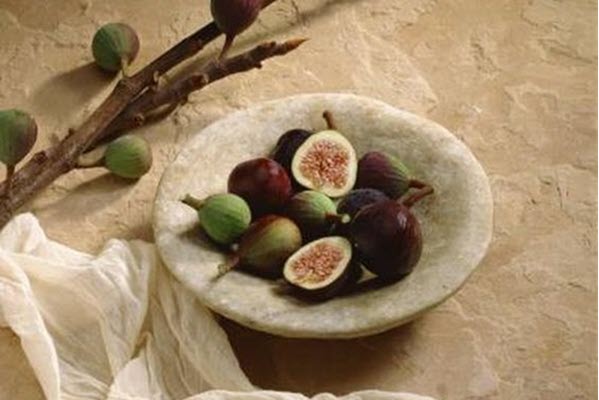
Source: Wikimedia Common
Apple trees, olives, and pomegranate trees were brought to Egypt from foreign territories to grow in the fertile lands of Ancient Egypt with the help of the annual flooding of the Nile river.
Fruits rich in sugar and vitamins, such as grapes, melon, dates, and figs, were planted and grown on a large scale to feed the entire population.
The higher class of Ancient Egypt imported coconuts which were regarded as luxury goods. It was costly, and even the higher class did not have much of it. However, the documentation of fruits in Egyptian tombs shows the variety of fruits present, which was vast.
As the times progressed, Egyptians had started to grow numerous varieties of fruits to the point that it had become difficult for them to document everything. However, they tried their best to trade fruits with their contemporary civilizations to record their fruits.
6. A variety of Juices
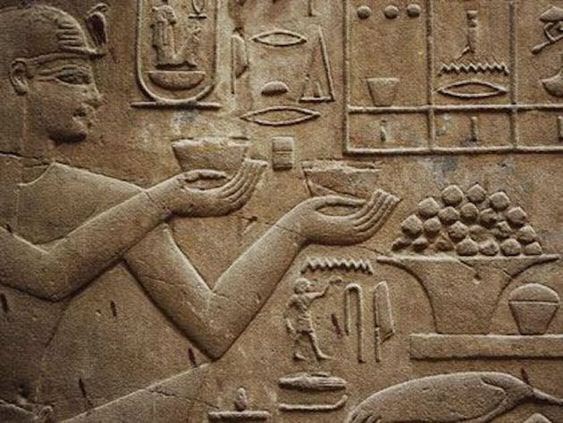
Source: Wikimedia Common
Juices made from fruits were consumed and enjoyed by several people in Ancient Egypt. However, it was not as widely popular as other beverages like beer and wine.
They used Citrus fruits with a sweet taste to make juice. The most widely consumed fruit juice was grapes and figs juice made by pressing fruits until they drained out every drop of liquid. They added natural sweeteners such as honey to the juice to enhance the sweet taste. They even made syrups from unfermented grape juice, dates, figs, raisins, carob, and the root of the chuba to add to fruit juices.
Ancient Egyptians created the concept of fruit juice which has shaped the culture for people even across today’s world even though it has evolved over several centuries.
5. Animal Meat

Source: Wikimedia Common
Animal Meat was another food item that served as a source in the healthy diet of Ancient Egyptians. They ate meat for energy and to obtain essential nutrients from animals. The tomb walls of Ancient Egypt give vital pieces of evidence that Egyptian food contained a wide variety of meat, including fish, beef, and poultry meats.
Apart from Poultry products which were a regular part of the diet, they severely hunted for meat. They also reared domestic animals such as cows, goats, and sheep.
However, they could only be a part of the delicacy of rich people, and the poor had to depend on poultry products. Meat such as beef was costly and accessible mostly to royals.
Fishing was a widely practiced economic activity in Ancient Egypt as it was close to the Nile river. They preserved some species of fish for religious beliefs for the god of the afterlife, Osiris. They only ate religiously allowed species of fish as a regular part of the Egyptian diet.
4. Food seasonings and oils

Source: Wikimedia Common
Ancient Egyptians discovered various methods to add flavors to their food. They developed their spices and flavoring to enhance the taste of bread and meat, and other staple food. They believed in a tasty meal along with a balanced diet.
Egyptians discovered several ways of making oils for cooking meat. They had found 21 types of oils made from vegetables, such as radish seeds, castor plants, and olives.
Salt, cinnamon, cumin, aniseed, mustard were mainly used as seasonings in Ancient Egypt. They incorporated them to add a solid savory effect to meals and dill, fennel, and thyme as food additives. On the other hand, they used honey and fruit syrups to sweeten their food.
3. Wine
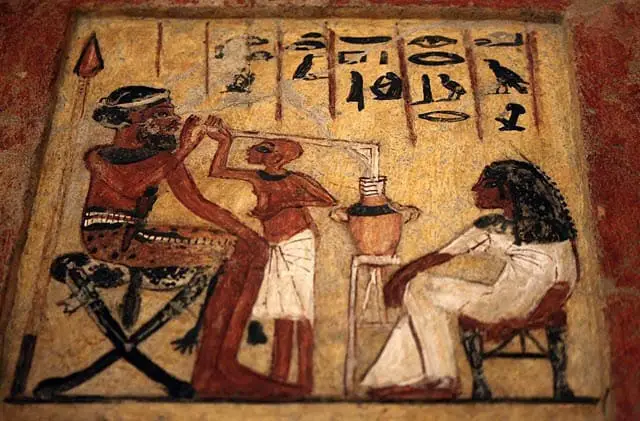
Source: Wikimedia Common
The wine was among the most consumed beverages after beer in ancient Egypt, which was extremely popular. Fruit juices were less popular than wine because it was the most popular fruit product.
Ancient Egyptians sold and widely consumed red and white wine daily. They squeezed the grape juice by putting them in a big bowl and letting a maximum of six people step on it. After that, they stored wine in a clay pot with dates to enhance flavor in their vineyards.
The history of wine can be dated back to 3100 BC in Ancient Egypt. It was regarded as a beverage only for the upper class and mostly not available to lower classes. It was regarded as a delicacy and found only in certain places, such as the Pharaoh’s court. However, wealthy people consumed it with almost every meal.
Ancient Egyptians had even appointed an official wine taster to ensure the taste and quality of the drink. It became much more accessible to Egyptians by the 18th dynasty when both red and white wines were available at many places for regular people.
2. Bread
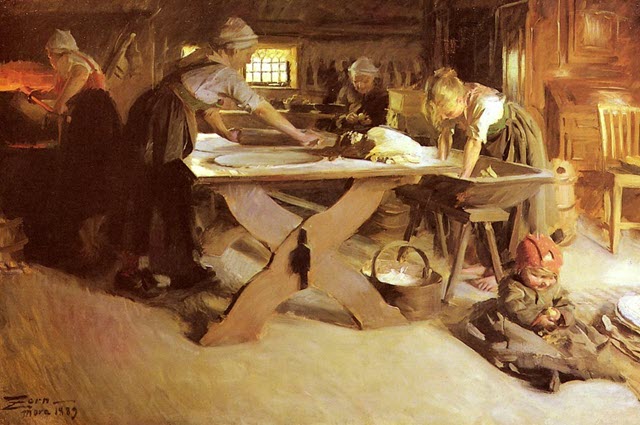
Source: Wikimedia Common
Bread was a staple food in the ancient Egyptian culture and constituted a large part of their diet. Ancient Egyptians had a very healthy and balanced diet, but the bread they ate was of poor quality.
They used simple utensils to make bread which caused unwanted ingredients such as quartz, mica, and other ferromagnesian minerals to be mixed with the flour. The bread would not be very clean and free of germs.
Ancient Egyptians made bread by mixing wheat and barley and kneading it with both hands or feet. They made the dough in huge containers as they mixed the yeast by increasing the size of the dough. They added salt, spices, milk, and eggs to make the bread tasty. Thus, it was consumed by all the population as a staple food.
1. Beer
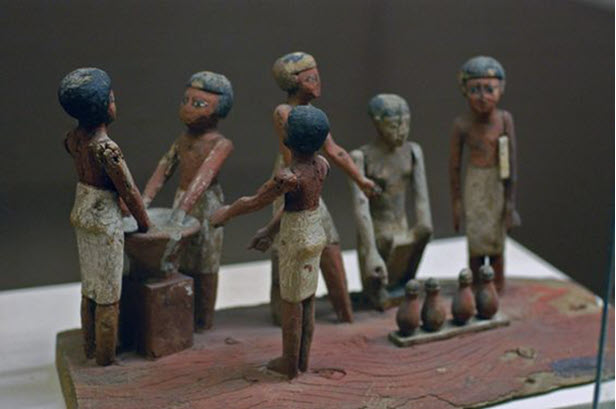
Source: Wikimedia Common
Bread and beer always came together for a majority of Ancient Egyptians. The blend of bread and beer was considered a perfect food and beverage mixture in Ancient Egypt.
People in Ancient Egypt drank beer daily, which they made from barley. It was readily available and was considered the preferred drink of living and dead, Egyptian gods, adults, and even children.
Beer was always a part of it every Egyptian meal. The workers even paid with jars of beer, oils, bread, vegetables, and spices. Beer was considered a healthy drink and was a part of the diet because it was cleaner than water from canals and had more sterile water than the Nile river.
During the presence of the courts of Pharaoh, two jars of beer were rotated daily, which provided people with high amounts of energy fueled with beer.
Conclusion
Ancient Egyptians had a very diverse food culture which mainly was a healthy and balanced diet. The most consumed food was bread, and the most consumed drink was beer.
The food culture of Ancient Egypt was a direct reflection of its economic practices, including agriculture, animal husbandry, hunting, fishing, and trade to some extent for the higher class. In a way, they have even shaped the food culture of today’s world.
